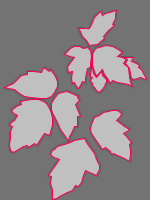Maryland Ivy Hazard Detection Computer Vision Project
Updated 10 months ago
111
views5
downloadsMetrics
Hiking in Maryland can be an enjoyable experience, but there could be potential hazards in the environment that could make it the opposite of enjoyable. Encountering poison ivy can be the most common natural hazard individuals can encounter when being outdoors in Maryland, leading to itchy rashes. There can be confusion in distinguishing ivies that are similar to the most common poison ivy in Maryland, which is the Eastern Posion Ivy (Toxicodendron radicans). My object detection model identifies the Eastern Posion Ivy (Toxicodendron radicans), and two other common harmless ivy species in Maryland that can look very similar to Eastern Poison Ivy, English Ivy (Hedera helix) and the Virginia Creeper (Parthenocissus quinquefolia). The model assists users to mitigate the risks of encountering poison ivy and identify what ivies are in the user's surroundings. The images used for the model were from iNaturalist and the Maryland Biodiversity Project website, where those two sites have such a large image dataset of various taxa and geographic locations in Maryland.
This model was created for a class assignment in AI and Natural History at St. Mary’s College of Maryland.
Use This Trained Model
Try it in your browser, or deploy via our Hosted Inference API and other deployment methods.
Build Computer Vision Applications Faster with Supervision
Visualize and process your model results with our reusable computer vision tools.
Cite This Project
If you use this dataset in a research paper, please cite it using the following BibTeX:
@misc{
maryland-ivy-hazard-detection_dataset,
title = { Maryland Ivy Hazard Detection Dataset },
type = { Open Source Dataset },
author = { Sara },
howpublished = { \url{ https://universe.roboflow.com/sara-bbx4y/maryland-ivy-hazard-detection } },
url = { https://universe.roboflow.com/sara-bbx4y/maryland-ivy-hazard-detection },
journal = { Roboflow Universe },
publisher = { Roboflow },
year = { 2024 },
month = { apr },
note = { visited on 2025-02-19 },
}
Similar Projects
See More




















